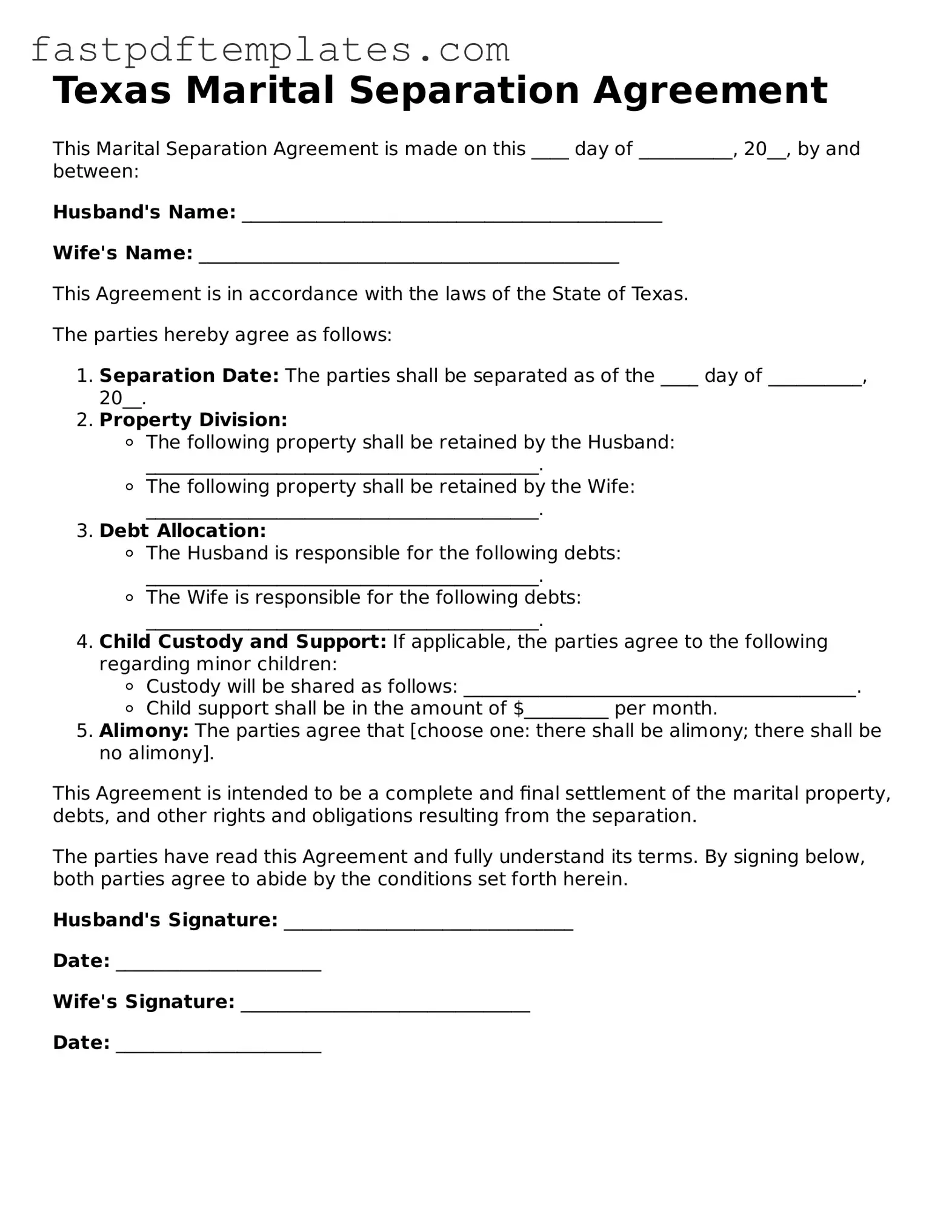Texas Marital Separation Agreement
This Marital Separation Agreement is made on this ____ day of __________, 20__, by and between:
Husband's Name: _____________________________________________
Wife's Name: _____________________________________________
This Agreement is in accordance with the laws of the State of Texas.
The parties hereby agree as follows:
- Separation Date: The parties shall be separated as of the ____ day of __________, 20__.
- Property Division:
- The following property shall be retained by the Husband: __________________________________________.
- The following property shall be retained by the Wife: __________________________________________.
- Debt Allocation:
- The Husband is responsible for the following debts: __________________________________________.
- The Wife is responsible for the following debts: __________________________________________.
- Child Custody and Support: If applicable, the parties agree to the following regarding minor children:
- Custody will be shared as follows: __________________________________________.
- Child support shall be in the amount of $_________ per month.
- Alimony: The parties agree that [choose one: there shall be alimony; there shall be no alimony].
This Agreement is intended to be a complete and final settlement of the marital property, debts, and other rights and obligations resulting from the separation.
The parties have read this Agreement and fully understand its terms. By signing below, both parties agree to abide by the conditions set forth herein.
Husband's Signature: _______________________________
Date: ______________________
Wife's Signature: _______________________________
Date: ______________________
